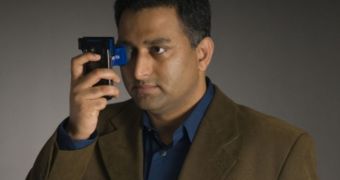More than 250 million people in the world today are blind from preventable causes, and an MIT expert and his team plan to put a serious dent in that massive number. The researchers developed a new instrument capable to scanning for cataract inexpensively.
At this point, cataract investigations can only be made using a specialized device called a slit lamp, that costs practices about $5,000, and requires the presence of a trained clinician to interpret the results.
Cataracts are the leading cause of preventable blindness, and this makes sense when looking at how complicated it can be for patients to undergo the necessary detection procedure. People in rural areas, and those living in the developing world or the Third World do not have access to these treatments.
An expert at the Massachusetts Institute of Technology (MIT), in Cambridge, wants to address the issue through a simple, clip-on device, that can be affixed to normal smartphone. By using the new system, it may become possible even for the layman to place cataract diagnostics within minutes.
“I like to think of this as a radar for the human eye,” explains the director of the MIT Media Lab Camera Culture group, Ramesch Raskar. He is also the NEC Career Development associate professor of computer and communications at the Institute.
The system, called Catra, operates by literally swapping a beam of light across the eye. What this does is help the instrument detect whether the eye featured patches of opaque surfaces called cataracts.
Media Lab graduate student Vitor Pamplona says that Catra even provides much more data than a normal slit lamp. The new tool “scans the lens of the eye and creates a map showing position, size, shape and density of cataracts,” he explains.
Interestingly, it may become possible to identify forming cataracts earlier on by using the new approach. “Catra relies on light passing through the lens as reported by the patient, who just has to indicate whether a point of light remains steady, dims or disappears,” an MIT press release adds.
“We turned the problem around. Instead of asking the doctor, we ask the patient,” Raskar adds, saying that this approach provides a cheap way of recognizing the problem. At this point, there are no other alternatives to treatment than surgery, but that could change soon as well.
“Together, NETRA (another clip-on eye diagnostics system) and Catra may become extremely valuable tools for screening patients that need eye-care assistance, especially in regions where eye doctors are not readily available,” comments Manuel M. Oliveira.
The expert is a visiting professor, from he Universidade Federal do Rio Grande do Sul in Brazil. He is also a member of the MIT team that is developing the new device.

 14 DAY TRIAL //
14 DAY TRIAL //